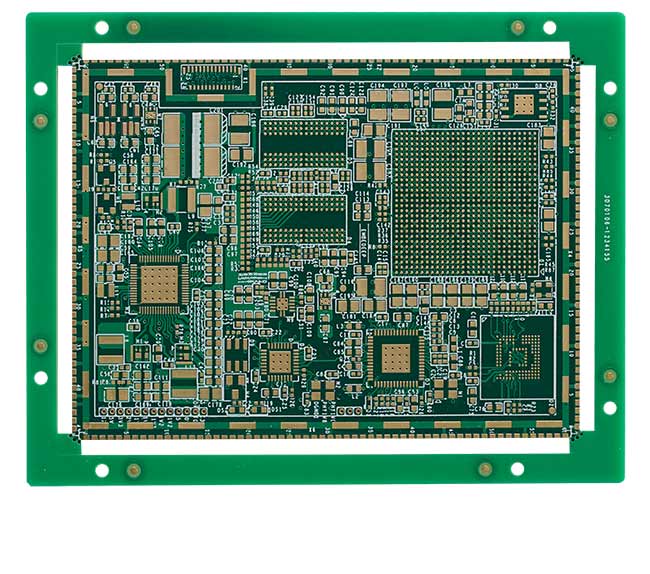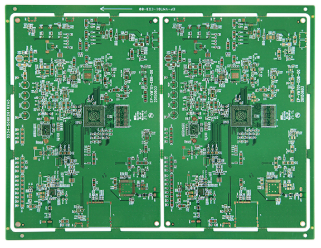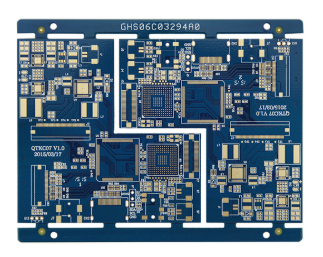High TG PCB

What is High TG PCB
"TG" refers to the glass transition temperature of the printed circuit board (PCB); it is the temperature point at which the PCB material begins to change. If the operating temperature exceeds the specified TG value, the circuit board will change from a solid-state to a rubber state and adversely affect the performance of the PCB.
Generally, standard PCBs are made of materials with a TG value of 140°C and can withstand an operating temperature of 110°C. These PCB materials will soften, melt, or even deform at high temperatures, which will reduce the mechanical and electrical properties of the entire product. Therefore, this ordinary PCB may not be suitable for the extreme temperature conditions common in applications such as industrial electronics, automobiles, and high-temperature electronics.
High TG PCB means that the TG value of the PCB material is greater than 170°C. The higher the TG value, the better the heat resistance, chemical resistance, and stability of the PCB.
Materials Suitable for Making High-Tg PCBs
FR4
FR4 is a board material composed of glass fiber cloth and epoxy resin, known for its flame-retardant properties. FR4 has high moisture resistance and temperature fluctuation tolerance, crucial for high-Tg PCBs. It effectively dissipates heat, ensuring the stability of conductors and dielectric materials.
IS410
This laminate and pre-preg material achieves a Tg value of 180°C. It can withstand multiple thermal fluctuations and pass high-temperature soldering tests up to 288°C. IS410 is also suitable for lead-free soldering in PCB industrial production.
IS420
This high-performance epoxy resin material excels in thermal performance, having a lower coefficient of thermal expansion compared to standard FR4 materials. It blocks UV radiation, making it very useful for automatic optical inspection in PCB manufacturing, and suitable for applications requiring high stability.
Venture Isola-G200
This is a polyimide/triazine (BT) and epoxy resin mixed material, offering superior thermal performance, mechanical strength, and electrical properties compared to most BT epoxy materials, thus becoming a common choice for high-density multilayer PCBs requiring reliability.
Why Choose High-Tg PCBs
High-Tg PCBs made from high-Tg materials outperform ordinary Tg and mid-Tg PCBs in terms of stability and reliability.
1. High Heat Resistance: Reduces warping caused by temperature and minimizes pad lifting during hot melt soldering and thermal shock.
2. Low Coefficient of Thermal Expansion (CTE): Reduces copper breakage at hole corners due to thermal expansion, especially in PCBs with eight layers or more, ensuring better plated through-hole reliability than ordinary Tg PCBs.
3. Superior Chemical Resistance: Performs well under numerous chemical immersions in wet processes.
It's important to note:
1. normal Tg cannot be mixed with high Tg due to different material characteristics. Pressing with lower Tg parameters for high Tg material may lead to insufficient curing, causing board bursting, while pressing with high Tg parameters for low Tg material may result in excessive flow, leading to thinning of the board.
2. When selecting the appropriate FR4 PCB material for your project, it is crucial to ensure that the Tg (Glass Transition Temperature) value of the PCB material is at least 10-20°C higher than the maximum operating temperature of your product. For instance, a lower FR130 material, typically with a Tg value of around 130°C, should ideally be used for products operating at a maximum temperature limit of 110°C to ensure reliability and stability under operational stress.
3. Component Selection for Temperature Sensitivity: It's essential to be mindful of the temperature sensitivity of certain electronic components. Devices such as crystals and electrolytic capacitors are particularly susceptible to damage under high-temperature conditions. Careful consideration should be given to the placement of these components on the PCB to avoid potential heat-induced failure or degradation. This precaution helps in maintaining the overall integrity and functionality of the PCB in diverse environmental conditions.
Factors Affecting Tg Value
Manufacturing Processing Impact on Tg Value
Tg control in PCB manufacturing mainly involves several aspects. First, preheat the board material at a temperature slightly lower than the Tg value by 10°C. (For instance, preheat High Tg high-speed material at 170℃ for 4 hours), primarily to release internal stress, remove moisture, and further cure the resin in the board material. Secondly, post-brown oxidation drying is essential, as the board material absorbs moisture after soaking in wet process chemicals. If moisture remains in the board, it will affect the quality of pressing and the Tg value, hence the need for post-brown oxidation drying (120℃ for 1 hour). Prepreg (PP) absorbs moisture during storage, which is difficult to expel during hot pressing. If not dehumidified, pressing is prone to board bursting and delamination, affecting the Tg value. Thus, dehumidifying is necessary before pressing.
Effect of Moisture on Tg
In the lamination process, the cross-linking reaction between polymers is not complete, leaving polar groups within the board material that attract moisture. This absorption makes it difficult to accurately reflect the Tg value of the board material. Therefore, before conducting Tg tests, the sample should be baked at 105℃ for 2 hours to eliminate moisture.
Applications of High-Tg PCB in Industry
1. Industrial Control
Programmable Logic Controllers (PLCs) involved in long-term manufacturing processes such as cutting, grinding, welding, and metal melting require high Tg PCBs to ensure reliability as these devices generate high temperatures and vibrations.
2. Automotive Electronics
High Tg PCBs are vital in the automotive industry, particularly for engine control units and other electronic components that must endure high temperatures during vehicle operation.
3. Communications Equipment
For devices requiring high-temperature and high-frequency stability, such as wireless base stations and fiber optic communication equipment.
Conclusion
High Tg PCBs are crucial for environments exposed to extreme temperatures, humidity, and chemicals. A higher Tg value signifies better heat resistance and moisture resistance, allowing PCBs to perform with remarkable stability and reliability under extreme conditions.
If you're uncertain about whether your product requires a high Tg board, how high Tg PCBs function, or how they protect your sensitive circuits, we are more than happy to share all the information gleaned from our 15 years of manufacturing experience.
From the development of high-Tg materials to the manufacturing of high-Tg printed circuit boards, and to final component assembly, we are equipped to answer any questions you may have. Please feel free to contact us at any time.


